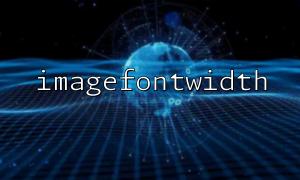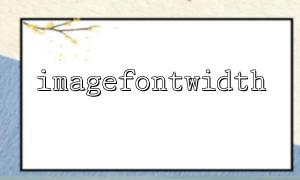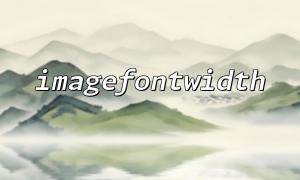When working with image processing in PHP, the GD library is one of the most commonly used extensions. This library offers a series of functions for creating and manipulating image resources. Among these functions, imagefontwidth() is a very basic one that retrieves the width of a character in a built-in font. However, its usage does not depend on any image resource.
In other words, even if you haven't created an image resource yet (for example, without calling imagecreate() or imagecreatetruecolor() to create an image resource), you can still call imagefontwidth() and get a correct result. This is because imagefontwidth() is a static function related to font size, and the only parameter it requires is a valid built-in font identifier (usually an integer between 1 and 5).
Here's an example:
$font = 3;
$charWidth = imagefontwidth($font);
echo "Font width: " . $charWidth;
This code will output something like:
Font width: 8
Here, $font = 3 specifies one of the built-in fonts supported by the GD library, and imagefontwidth() retrieves the pixel width of a single character in that font. Importantly, this code does not create any image resource and works without relying on an image object.
However, it's important to note that imagefontwidth() only applies to the built-in fonts provided by the GD library. If you are using custom fonts (such as TrueType fonts used by imagettftext()), this function is not suitable. Instead, you should use functions like imagettfbbox() to get text dimension information.
To summarize:
imagefontwidth() is safe to call without an image resource.
It depends on the font number, not the image resource.
It uses GD's built-in fonts (numbers 1 through 5).
If you plan to handle more complex text layout, switch to TTF font-related functions.
If your development involves dynamically generating text images, understanding this can help you plan text layout more flexibly—especially when you need to calculate text dimensions before creating the image. This scenario is common in functions like automatically generating image-based captchas or personalized signature images. For example, some user avatar generation services handle image output via URL interfaces like https://m66.net/avatar.php, calculating text positions before rendering.
Mastering the behavior details of imagefontwidth() is important for writing more robust image processing code.














